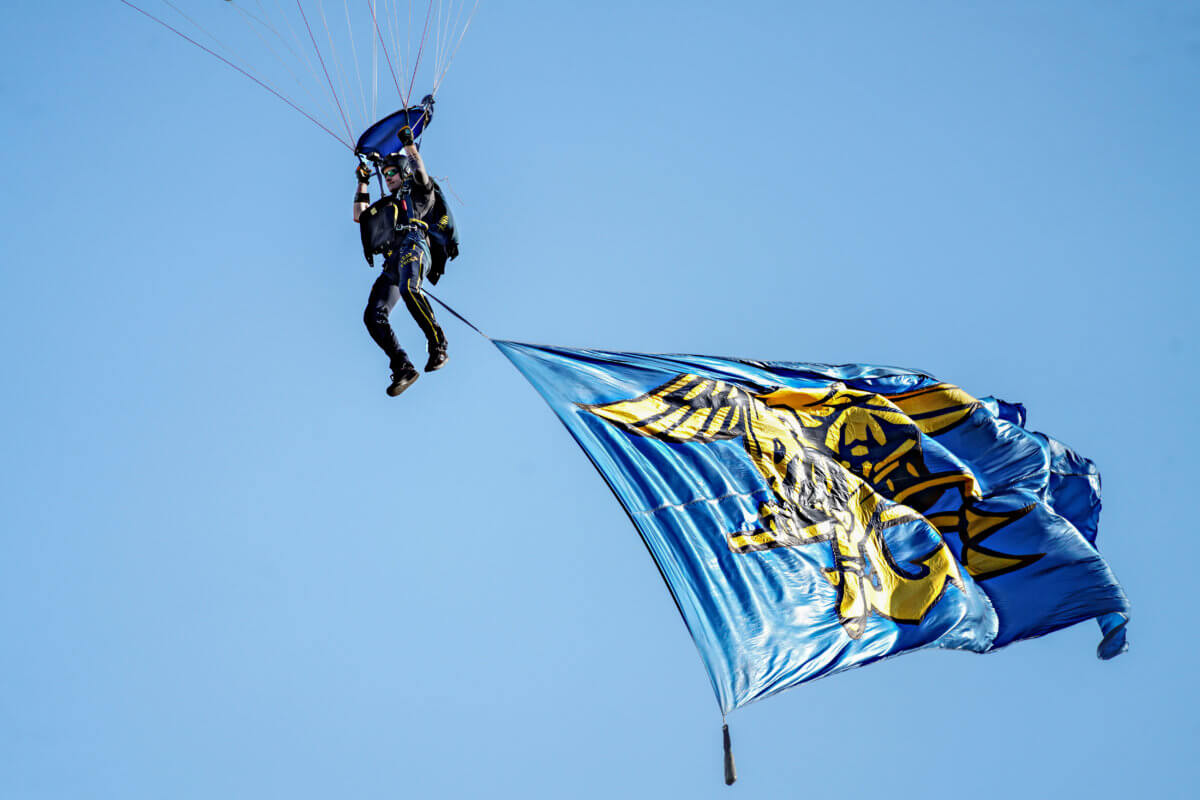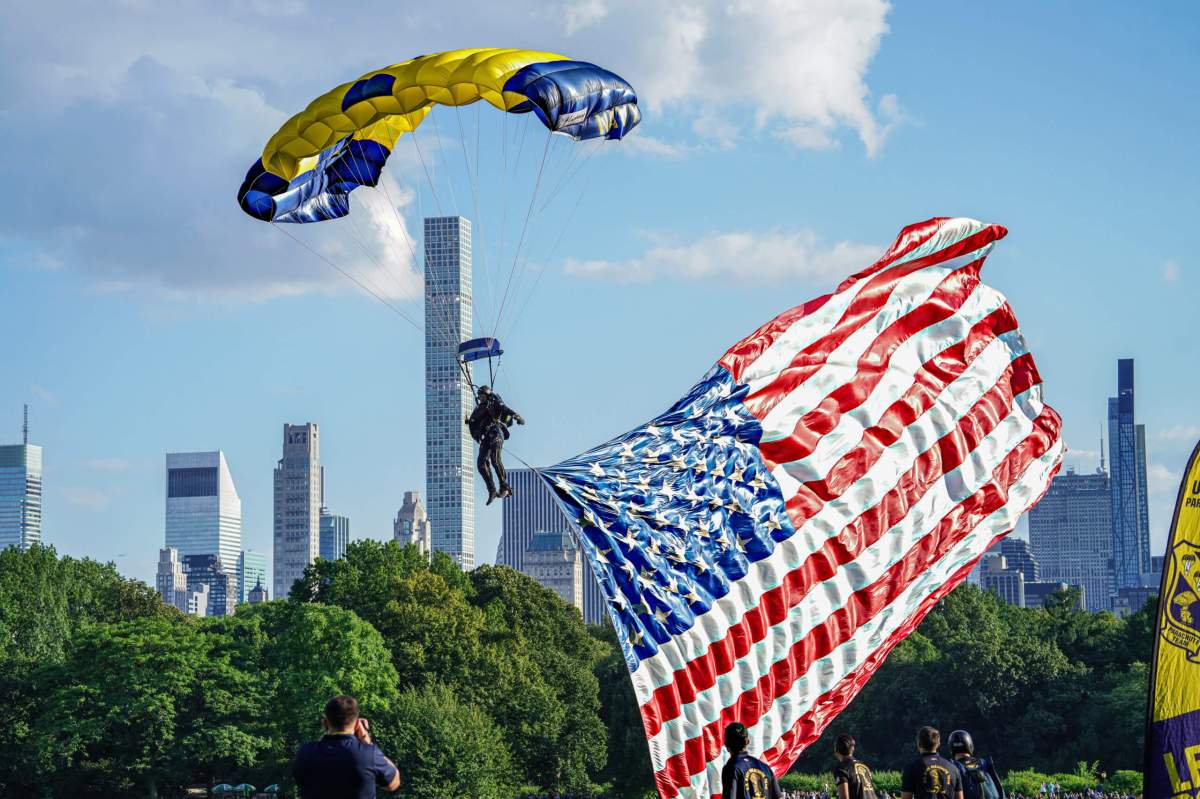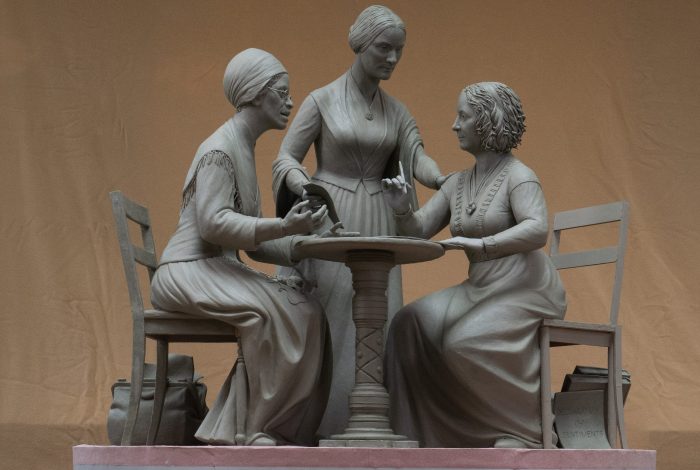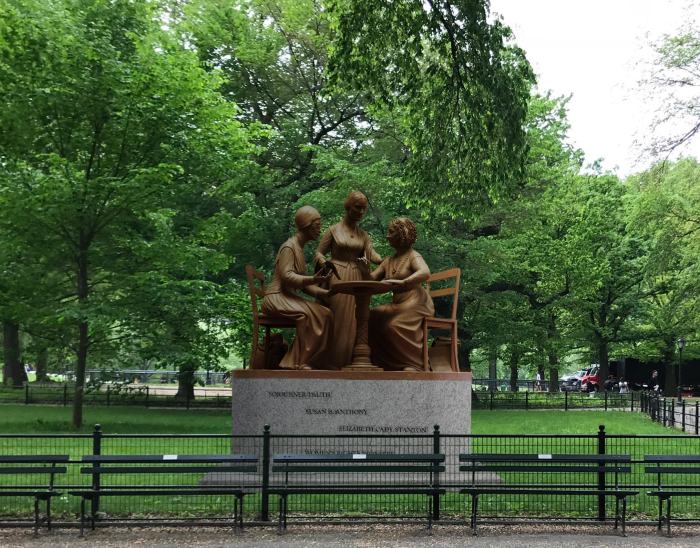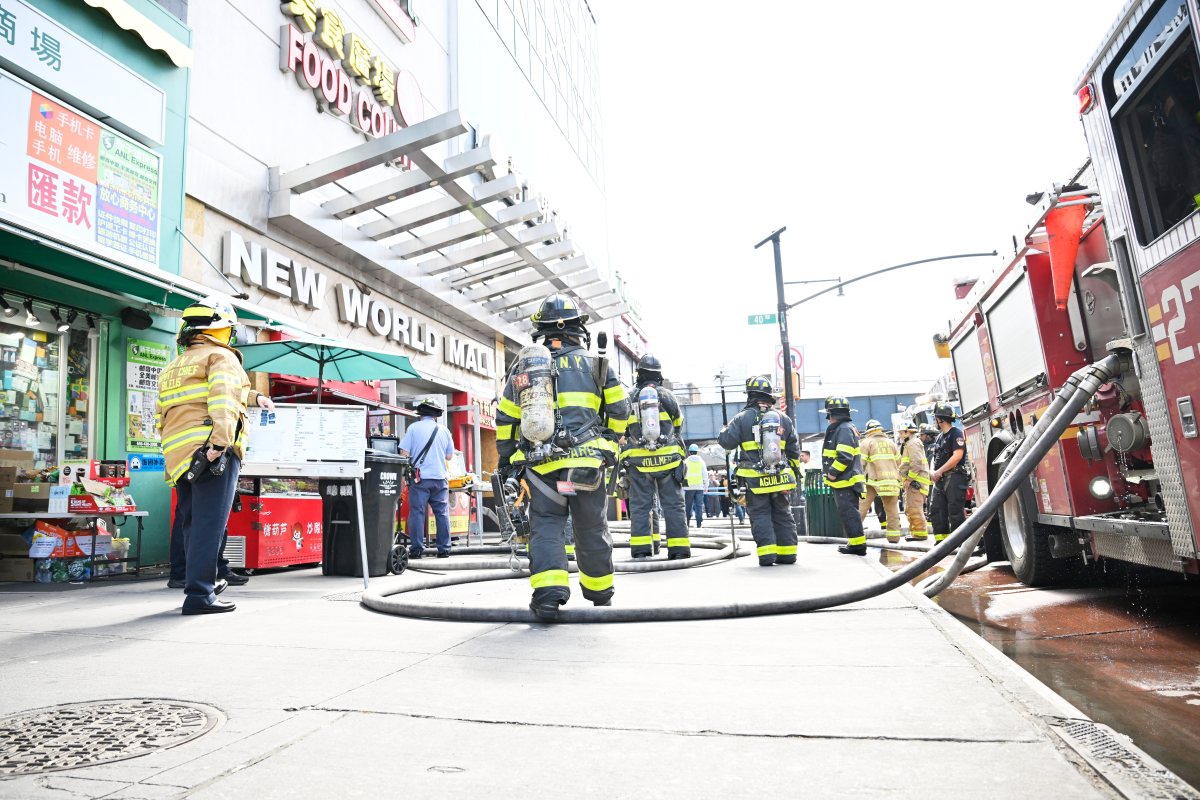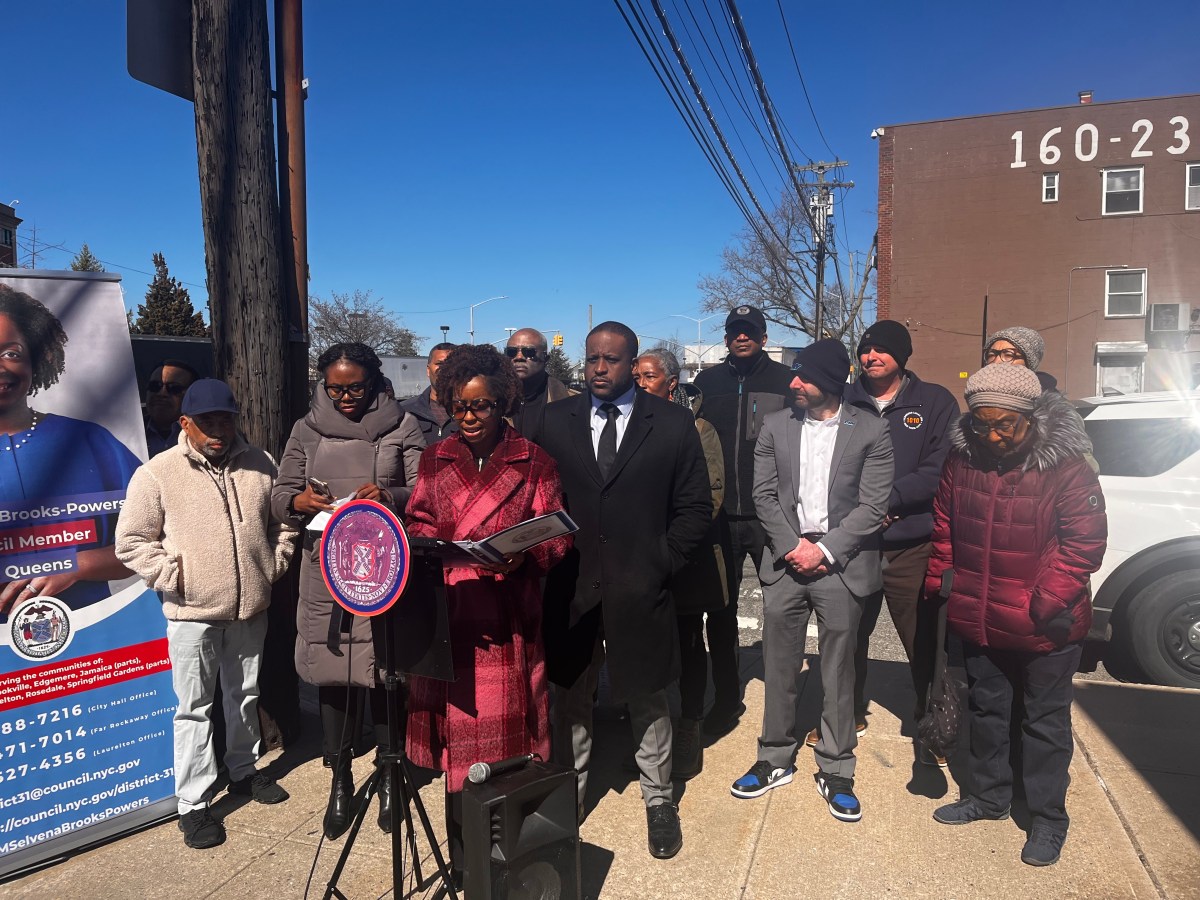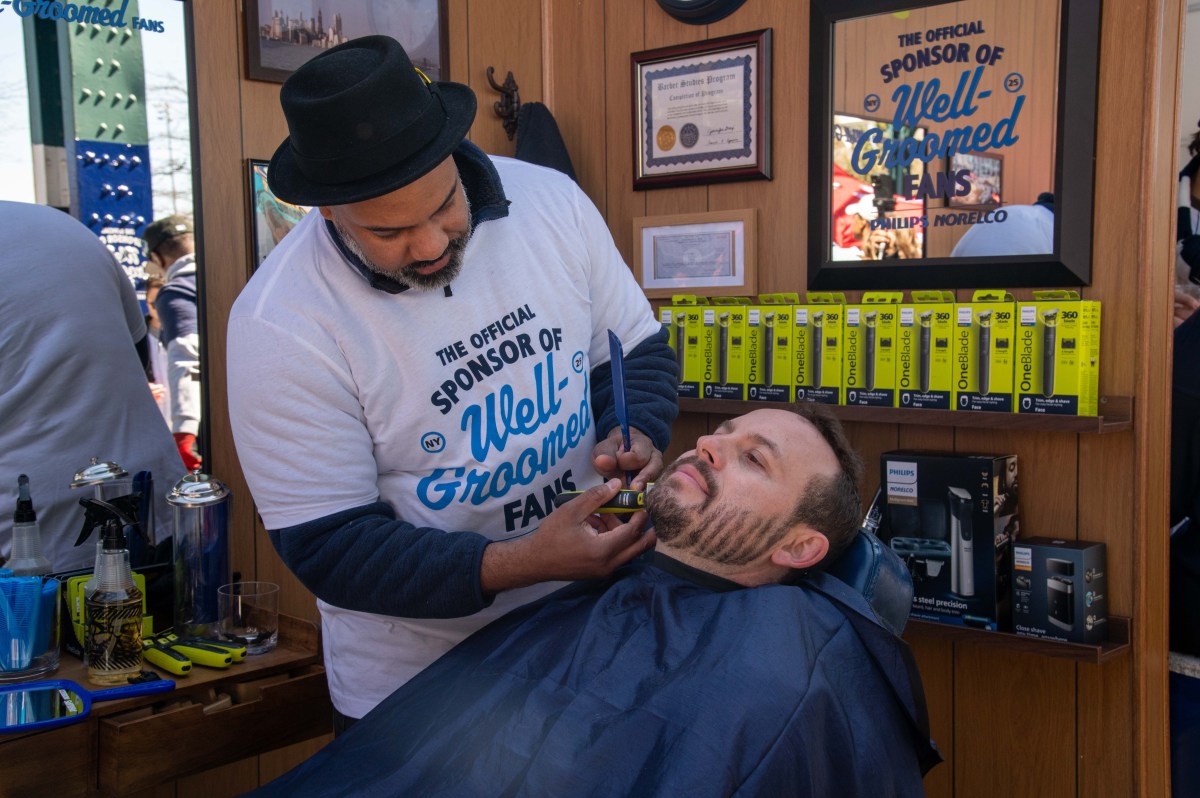Hundreds flocked to Central Park’s Great Lawn for a dramatic aerial extravaganza.
US Navy Seal Leap Frogs literally descended on New York Thursday evening in astonishing fashion by leaping from a moving aircraft. Emerging from the clouds, a C-130 military plane served as the 8,000 feet jumping point for the skydiving demonstration.
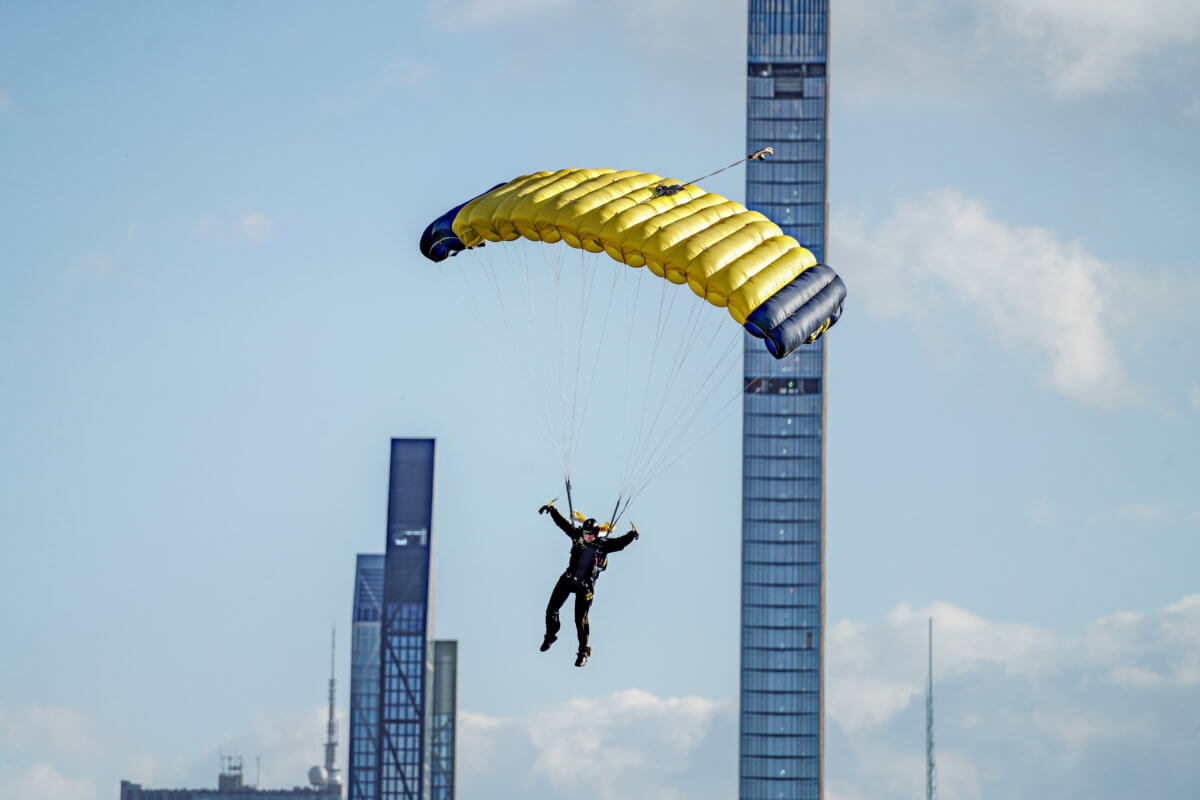
Hurtling through the air, the Leap Frogs performed breathtaking maneuvers with their parachutes deployed, including leaving smoke trails behind them, flying the Star-Spangled Banner in midair, and even joined together in the descent to show-off acrobatic moves.
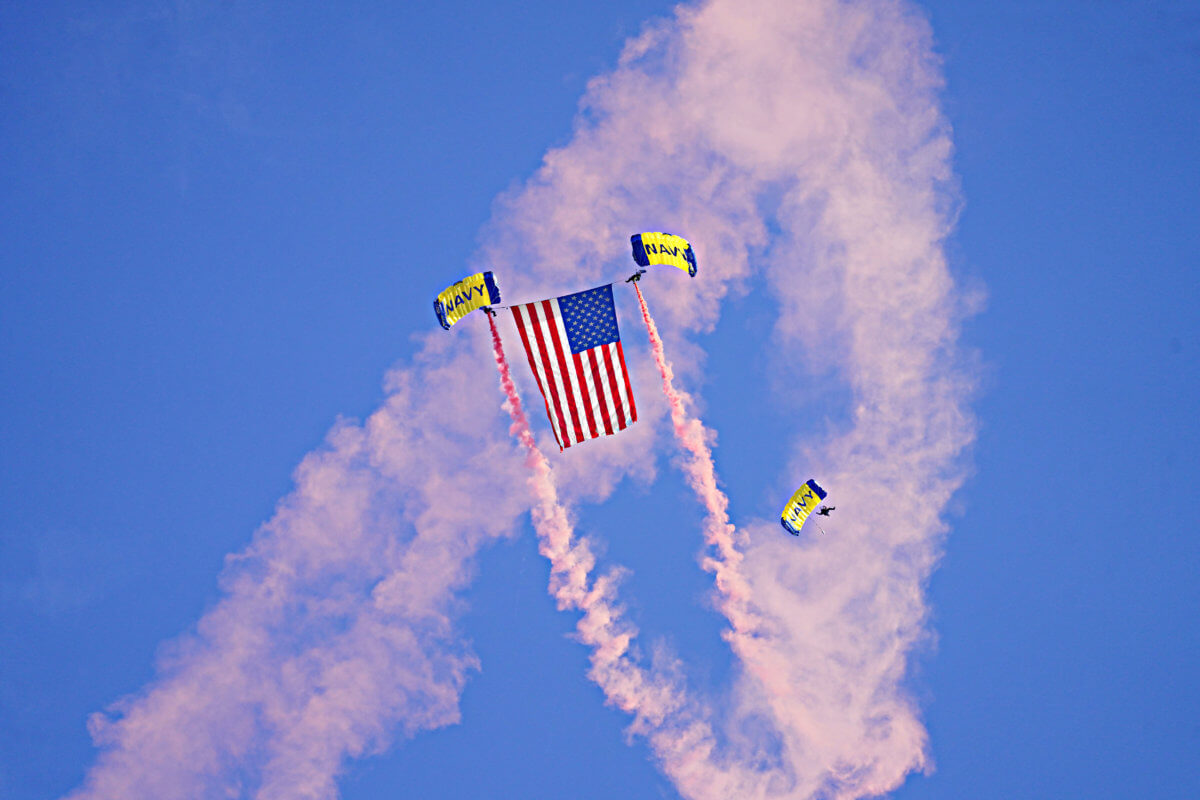
The crowd roared with excitement as the Leap Frogs came in for a landing with the city skyline as their backdrop and their feet hitting the grass with pinpoint accuracy. This marked the first occasion skydivers plummeted into Central Park.
The team was created in 1969 by the Navy SEALs and Underwater Demolition Team members who volunteered to perform during the weekend air shows, and in 1974 they were dubbed the “Leap Frogs” by the Chief of Naval Operations. The skydiving Seals mission for every demonstration is to showcase the excellence of the United States Navy.
After their performance, members of the Leap Frogs took photos with and answered questions from spectators, who each were wondering what it’s like to freefall thousands of feet toward the ground and have the fortitude to land safely while also making it look fun.
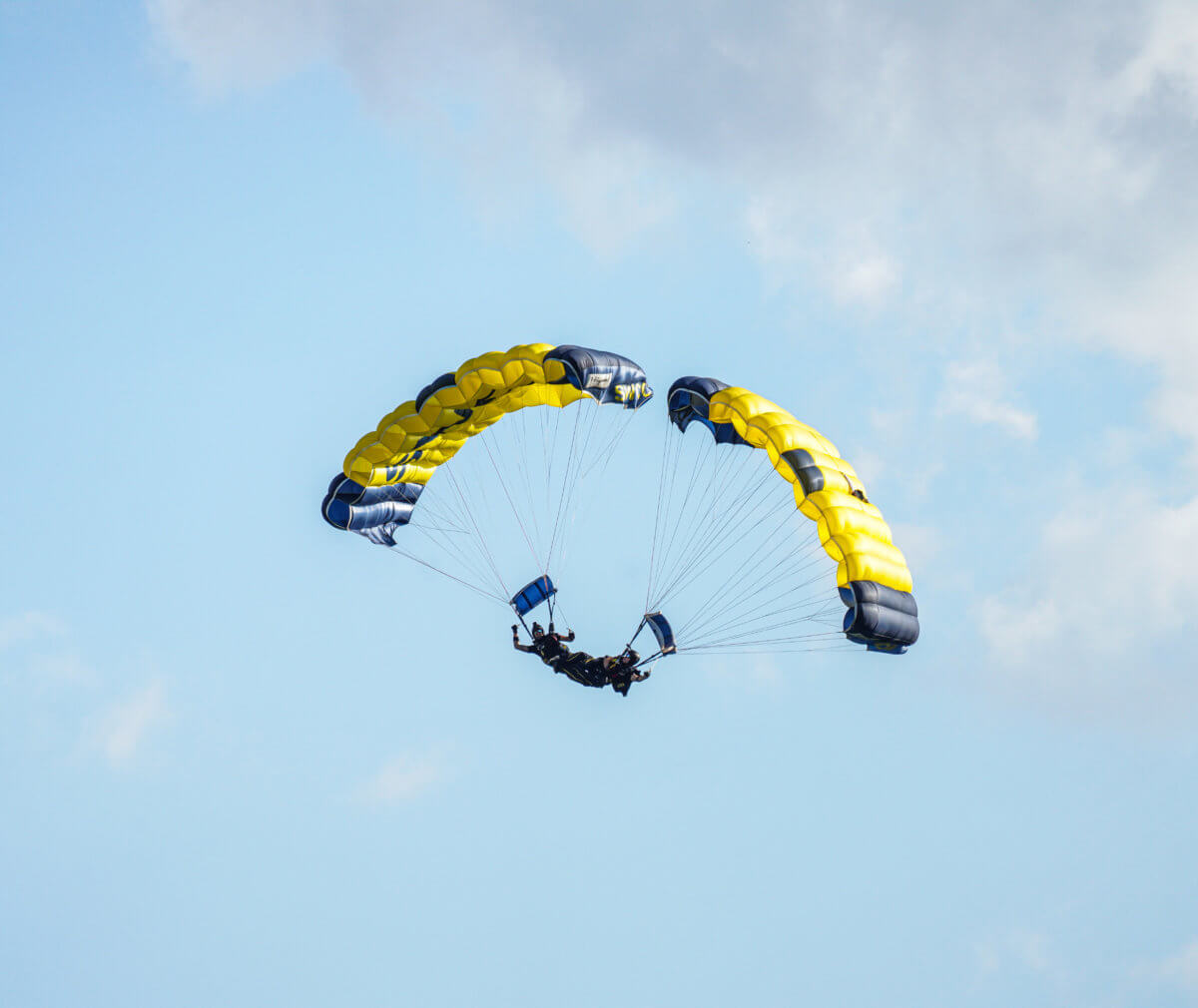
“It’s amazing and being a part of the team that did it for the first time ever! No one has ever gotten to jump in here. I’m baffled at the opportunity,” exclaimed George Monteveride, SO1 Navy Seal as he described the feeling of parachuting into Central Park, adding, “It’s awesome seeing the community giving us support, this town has been through a lot.”
Jim Woods told amNewYork Metro that the team has jumped into several parks this month, including Murphy Park, Matthew Kantor Memorial Park, and then on Aug. 7 at 9:30 am and 6 pm they will be jumping into Liberty Park.
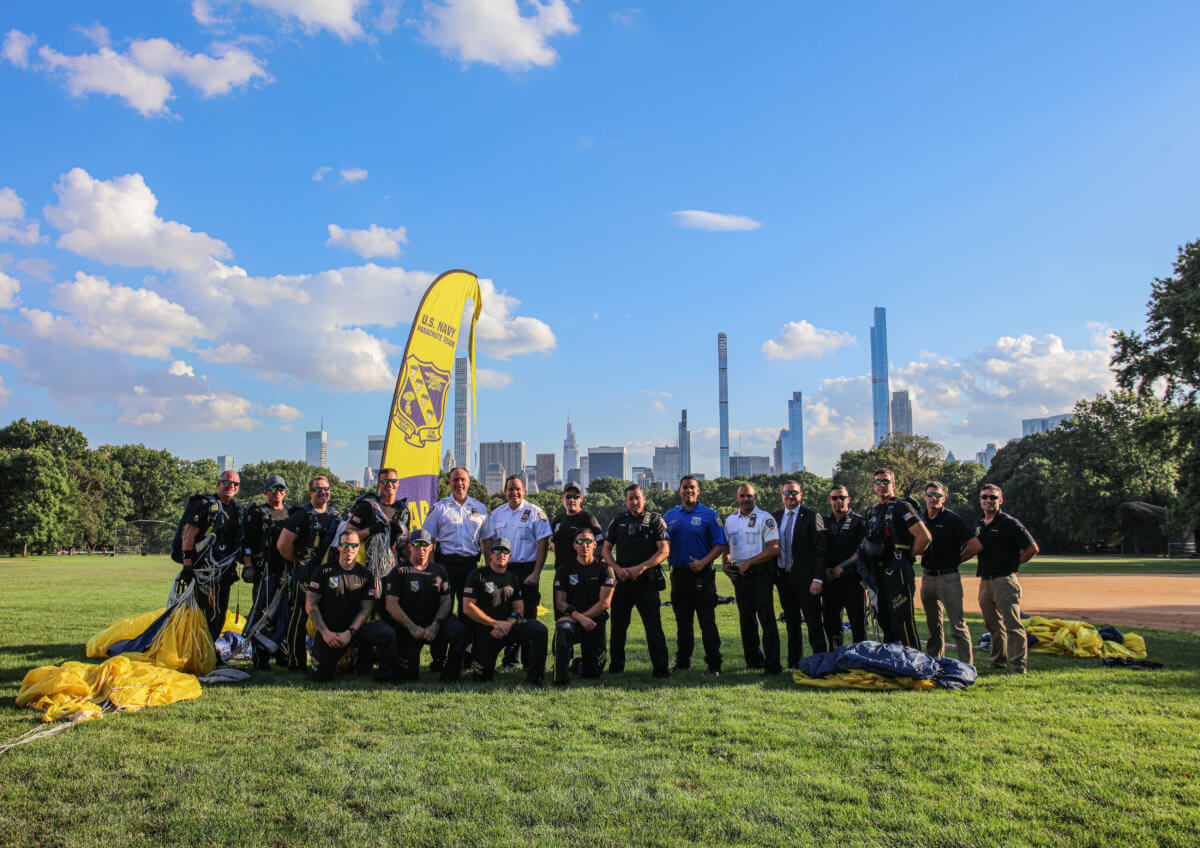
“We do parachute demonstration jumps all over the United States raising awareness for young people to consider the military as an option for their future,” Woods said.
Woods joined the Navy in 1982 and retired in 2003, but he still enjoys parachuting so much that he continues to volunteer with the Leap Frogs—jumping for over 37 years.
Jumping out of a plane was not always Woods’ idea of a good time. Over the course of 200 jumps, he became more comfortable with the routine and procedure, and while he still has fears they dissipate as soon as he is in the air and his parachute opens up for a safe landing.
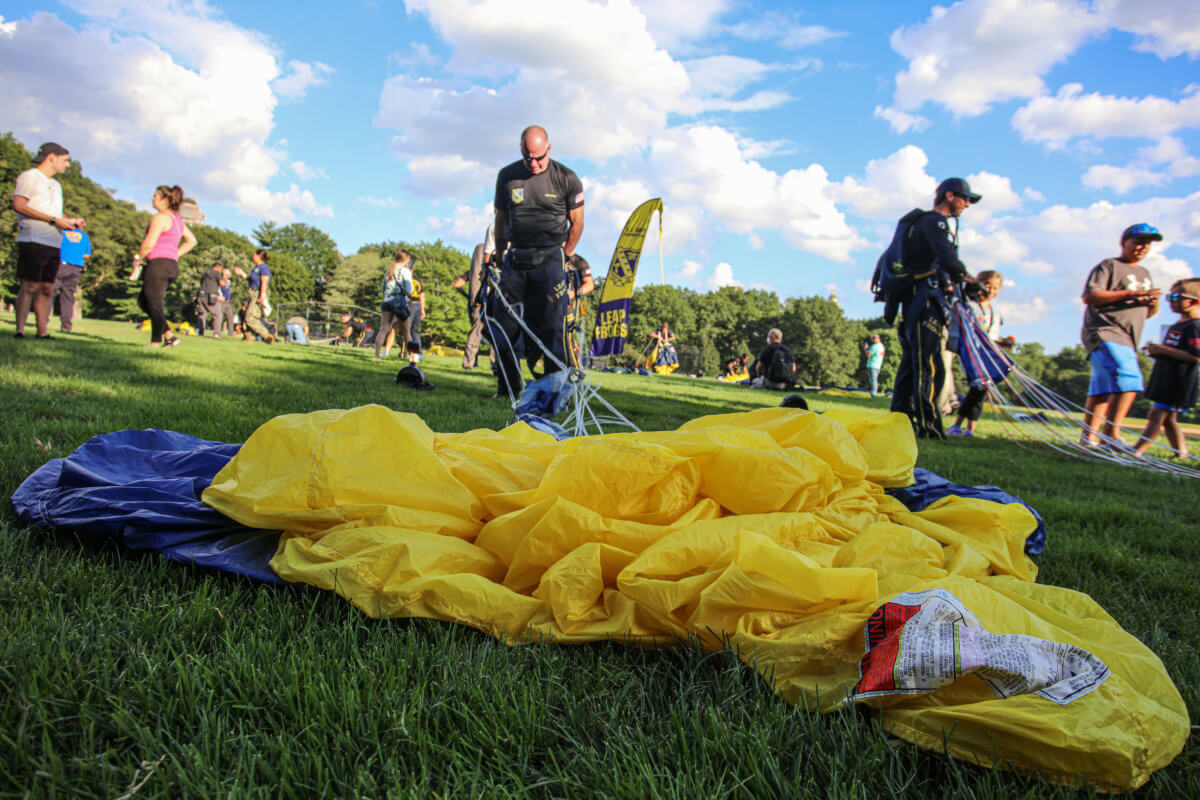
“I was broke and tried to figure out what to do with my life and someone suggested that I join the Navy and I did. So, my first job in the Navy after schooling was at a SEAL team and they put me in charge of all of the high-altitude oxygenating equipment, so they figured if I was going to be in the airplane, taking care of the oxygen equipment I better wear a parachute in case I fell out. If I was going to wear a parachute, I need to know how to use it. So, I went to jump school in Lakers New Jersey and learned how to jump, and never liked it until I had about 200 jumps later,” Woods said.
Every time Woods jumped for work, the process became less scary and started to have more fun with it. Now he continues to volunteer with the LEAP Frogs.
“I really enjoy doing tandem jumps for people who have never jumped before, teaching people how to jump, working with people who have never done it before,” Woods said, stating that parachuting is not for everyone.
